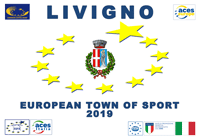Livigno is one of the most famous tourist resorts of the Alps, located at the tip of the Valtellina, located between the Stelvio National Park and the Swiss National
Park. Over the decades, the country has managed to preserve its environmental, natural and architectural heritage intact, developing it as a function of culture and
local traditions without sacrificing investment in modernity, but always respecting the surrounding area. For this, Livigno is a paradise for those who enjoy holidays
at one with nature, experiencing moments of relaxation, breathing in fresh air and enjoying the sun at high altitudes.
In Livigno, you just need to take a look at the mountains that embrace the valley and the majestic landscape with mountains that gently descend from 3,000 to 1,800
metres.
This area is able to convey feelings of peace and serenity, simply perfect for a summer or winter vacation switching between walking paths, cycle tracks and
pedestrian routes, mountain biking and hiking trails, areas for downhill skiing, snowboarding, telemark and Nordic skiing.
In 1980, during the first edition of the CONTRADE TROPHY , the characteristic Nordic ski race held at night along the 8 main streets, the "Group Amateur Fund" made
the division of the country into regions, "Contrade". Until then, the Contrade were non-existent, except to distinguish the towns by fractions matched to the main churches
of S. MARIA (Spazzon), S. ROCCO (Truzz) and S. ANNA (Trepál). Nowadays, Livigno boasts eight districts: Centro, Comunin-Pemont, Forcola, Ostaria, Plan to Sora, Saroch,
Teola, Trepalle.
CENTROThis district covers the central area of the historic area of the Plan, the plan of the valley of the town. This is currently the area which includes the most northern
part of the pedestrian zone. At the beginning of via Plan is the town square (Plaza dal Comun) where Bait dal Comun and its offices are situated.
In the Plaza dal
Comun, there is War Memorial built by local artist Lydia Silvestri in 1968.
FORCOLA
The Forcola district is named after the mountain pass which marks the boundaries of Livigno with Switzerland. The name comes from the appearance of
a fork (Forcola) in the ridge of the nearby mountain.
Here you will find Plaza Placheda, a multipurpose centre opened in 2005. The facility boasts a main hall (900
seats) and a conference room (150 seats) in addition to being the headquarters of the Company for the Promotion and Development of Tourism in Livigno.
OSTARIA
The Osc'taria district was originally a group of houses on the northern edge of Livigno. The name probably derives from the inns once present in this
area. At the outskirts of this town is Val Fedaria, a unique and unspoiled valley.
Places to visit include the church of Our Lady of Caravaggio. The construction
of this small but beautiful church dates back to 1720.
PEMONT
This country was born from the union of Pemont with Comunin - meaning 'common' land owned by the city . Here lies the parish church dedicated to the
Nativity of Mary.
Places to visit include the Dairy shop for tourists. The milk from here comes exclusively from local stables and pastures; the same milk is then
processed into butter, yogurt, cheese and other dairy products.
PLAN DA SORA
The name of the Plan dasor district is newly introduced and does not correspond to the actual historic area that included the meadows of the
valley between the main road and the Aqua Granda, the ancient name of the river Spoel. Nowadays, the most southern part of the pedestrian zone starts from via S. Antonio
Places
to visit include the church of St. Anthony, whose origins date back to the '500s. Inside you will find some valuable paintings: The Madonna and Child and St. Anthony
the Great and St. Anthony of Padua.
SAROCH
Saroch district was originally separate from the town of Livigno. In this area, there is the beautiful church of St. Roch, the second largest religious
building in Livigno, whose construction began in 1591.
Here, you'll find the "santèla", a shrine with the depiction of the Madonna. It is said that it was built after
a horse had reared up there, thus preventing the passage of a procession.
TEOLA
Originally the name referred to a single téa (the téa of Teola), but it is now one of the most built-up areas at the foot of the mountain. Newbuilds
include the Larix Park, an aerial adventure park, whose name is inspired by the larch trees found in these forests.
"Téa" in the local dialect refers to the wooden
mountain huts used for transhumance, the seasonal migration of livestock to suitable grazing grounds.
TREPALLE
The district of Trepal holds the record for the highest permanent settlement in the Alps. According to legend, the village is so called because the
first house was built with three poles, like a wigwam, by some Pedenossoe shepherds; it should be emphasised, however, that there is no direct evidence.
Places to
visit include the church of St. Anna, the highest parish in Europe whose origins date back to 1600 but was rebuilt in 1924. Here you'll be able to catch a glimpse of
absolutely unique bas-reliefs of Via Crucis, cast in bronze by the sculptor Paolo Quattrini.

 -/-°C
-/-°C 6/6
6/6 WEBCAM
WEBCAM








